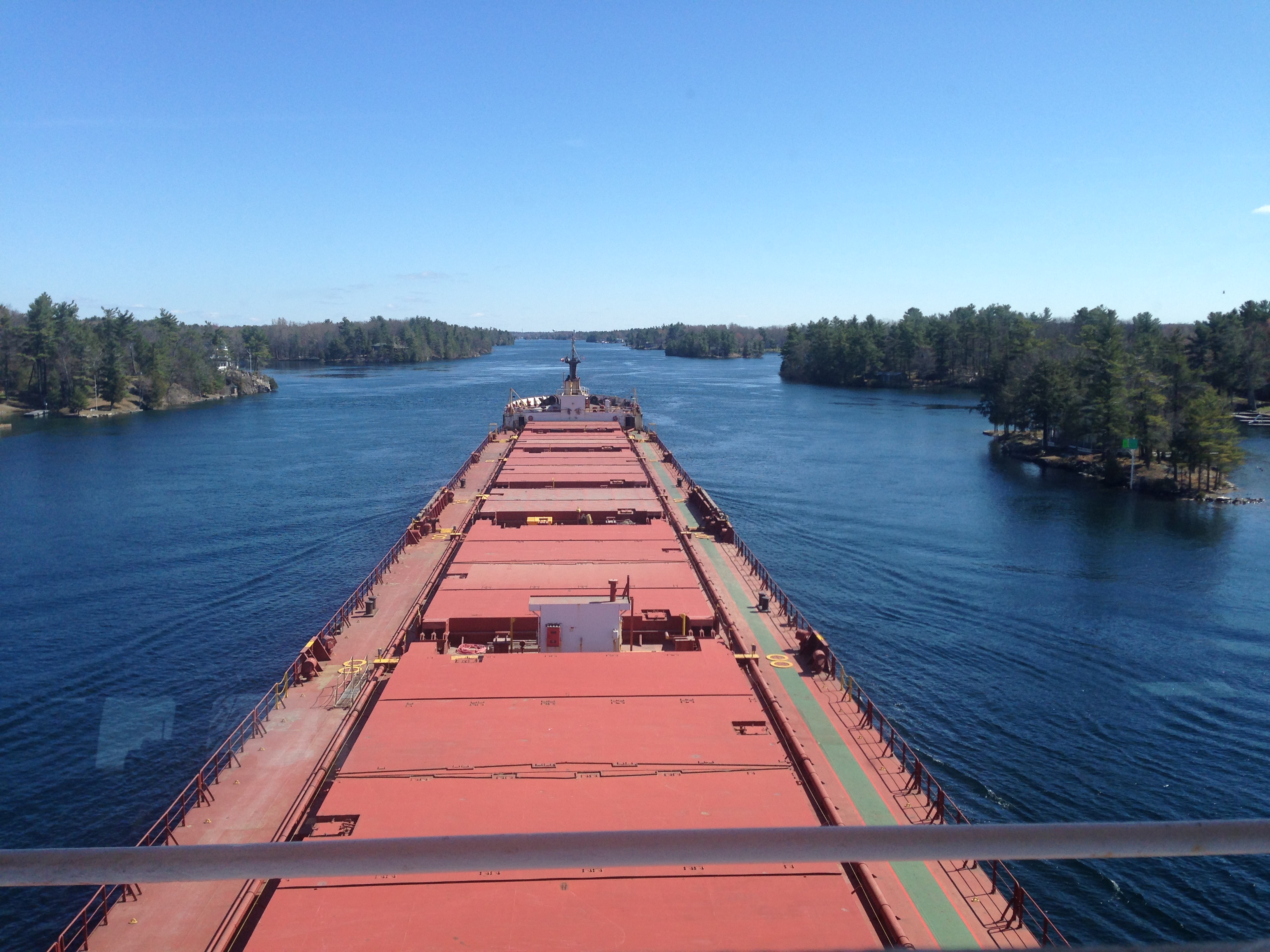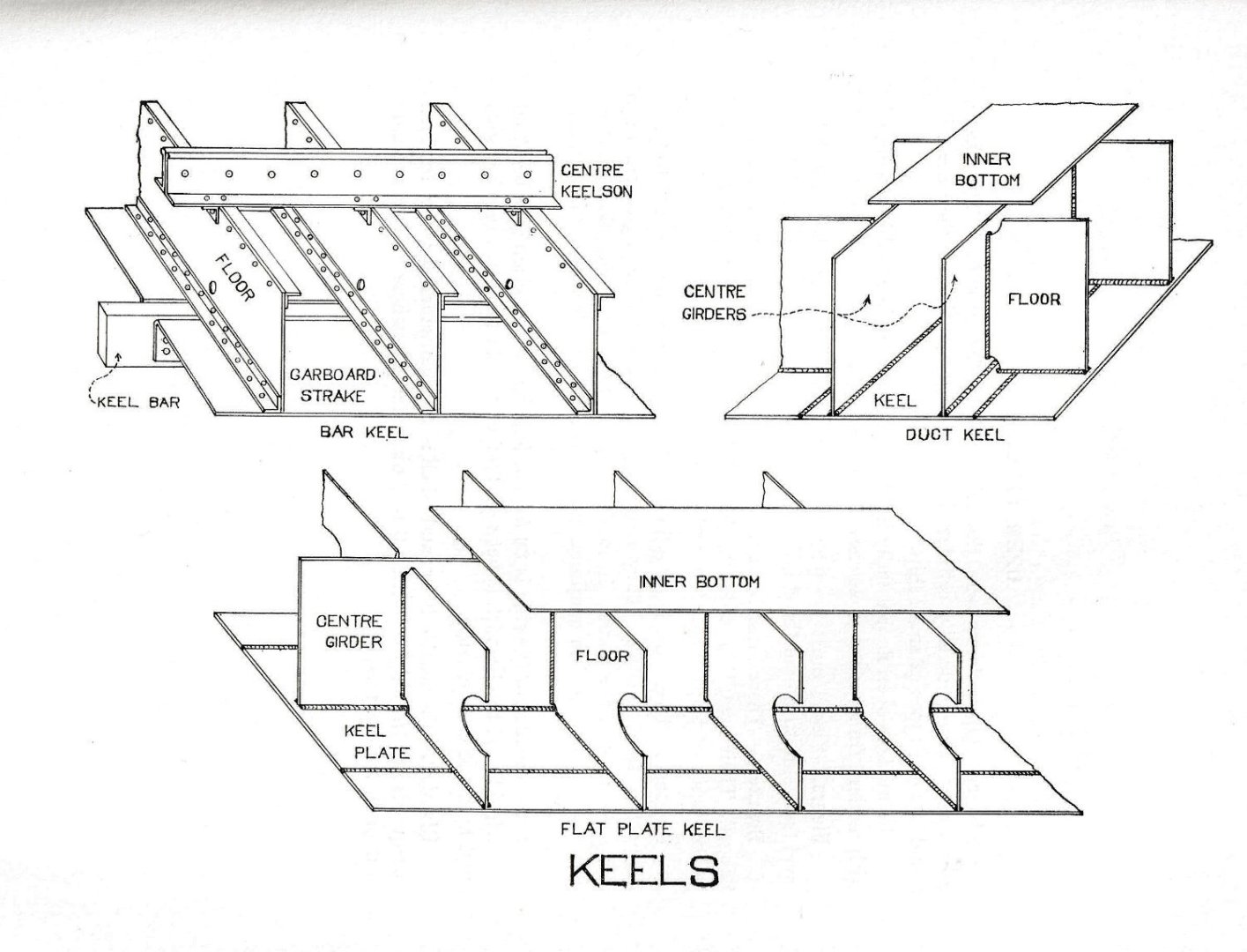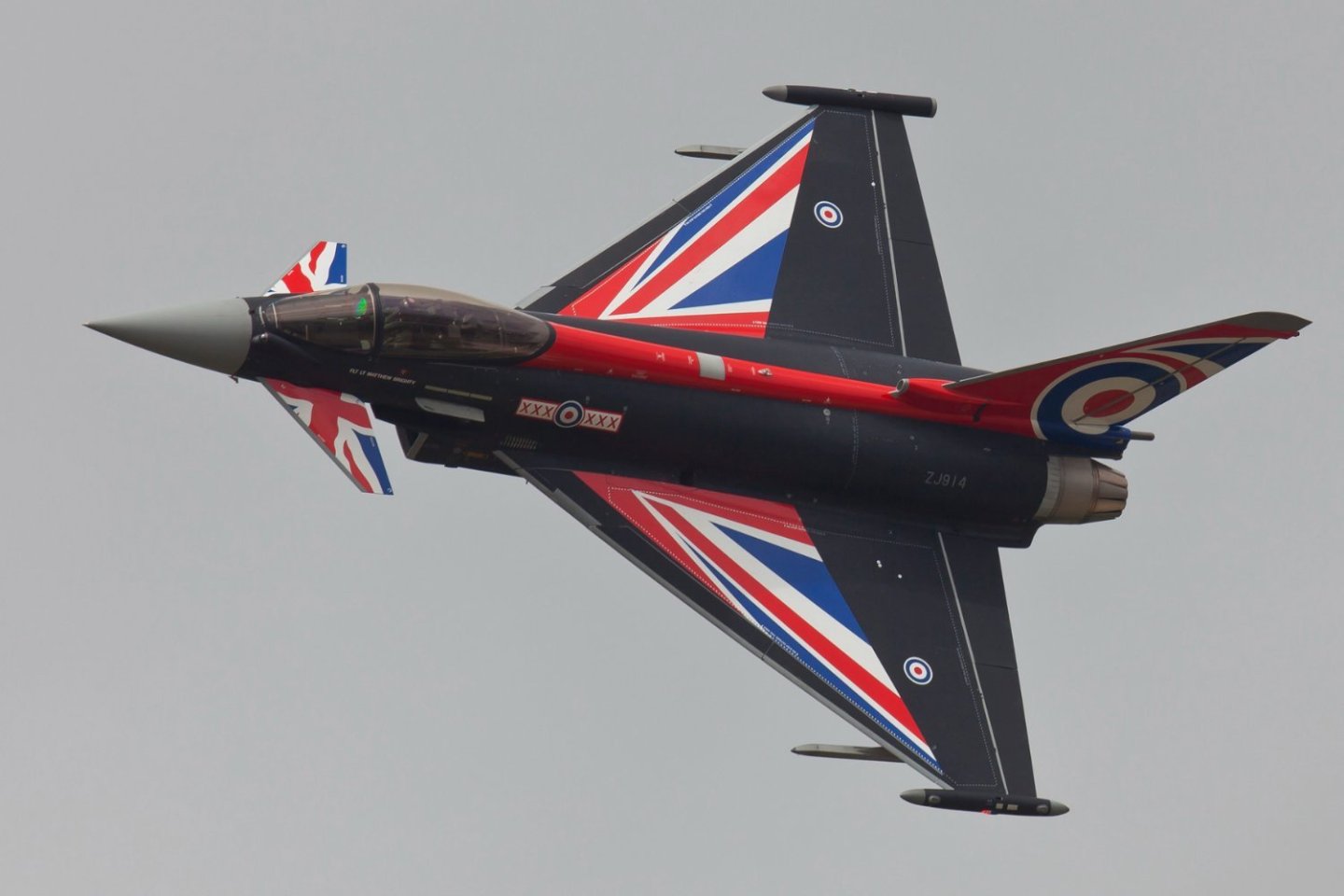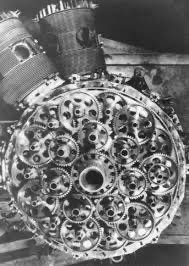-
Posts
3,091 -
Joined
-
Last visited
Content Type
Profiles
Forums
Gallery
Events
Posts posted by realworkingsailor
-
-
20 minutes ago, Jim Lad said:
I hate to disagree with you Andy, but some early steel ships had bar keels. Here's another illustration from Pursey's book showing the construction of a bar keel at top left. I should add that Pursey was probably outdated even when it was first published in 1949. Such archaic tomes had no doubt been long withdrawn by the time you were studying for your tickets.
John
Good ol’ Pursey’s! Yes I agree some early steel ships did have bar keels, but from what I understand, by the time period of WW1 lake ships had long abandoned that design in favour of internal keel girders (duct keels). A keel hanging down below the hull reduces the amount of “useful” draft a ship can have, ie you carry more cargo if your 25’ draft is all ship, rather that if 6” of that was bar keel hanging down below the bottom. A significant amount of what we would call “modern” steel ship construction was developed on the lakes (the bulk carrier, for example). The lakes have long been about maximizing the ship size to fit a given space.2 hours ago, Mirabell61 said:Andy, many thanks for your comment.... I appreciate very much that you know so much of the design of these lakers.
I`m not sure if I understood you right there, do you mean the ships bottom along the keelline should be flat, and flush with the hull skin ?
The keel in centerline is in the moment only standing out about 1,5 mm, wich I would`t mind about. Bilge keels and center keel are horizontal at the same level.
Nils
Yeah, the centre line keel. Generally speaking, if you took a transverse section of your ship and drew a square around it, where the bottom of the square lined up with the flat bottom of the ship, and the sides lined up with the vertical section of the extreme breadth, the bilge keels should fit in the triangular section formed by the sides and bottom of the square and the rounded turn of the bilge.Andy
- Retired guy, Mirabell61, druxey and 1 other
-
 4
4
-
Looks good Nils! Before you get too far ahead, you should sand the bar keel down the centre line flat. I think I read you based your build on plans for the wooden version of these ships, which had the old style keel, but that shouldn’t feature on this sort of steel ship.
Andy
- mtaylor, Canute, Keith Black and 1 other
-
 4
4
-
-
34 minutes ago, AJohnson said:
That is a good shout and I did find making those plates look neat a pain when I built the bubble top version, but I am not aware of any AM replacement P.E.?
I looked on Scalemates and couldn’t see anything amongst the listed AM sets. Could you scratch build the fishplates from thin brass or styrene stock?Andy
- Canute, Jack12477, Old Collingwood and 4 others
-
 7
7
-
8 hours ago, NavyShooter said:
My Great Uncle Harold flew with 404 in WW2. He was a Beaufighter pilot.
Nice! Do you know his plane(s) number/code? The 1/72 Airfix kit that I’m building comes with markings for 404 squadron. (EE-F). My build is on a bit of a summer stall at the moment, but I’ll pick things up when the weather starts to cool again.
Andy- mtaylor, Old Collingwood, Egilman and 1 other
-
 4
4
-
-
-
-
2 hours ago, Egilman said:
Yep there were quite a few engines like that in that time period... Would have been very interesting to see the design line mature in development...
There was a little government assisted industrial espionage. From what I understand, the Air Ministry passed on quite a bit of the Napier’s technological information along to RR…The sleeve valve came about after a 1927 paper by Harry Ricardo that calculated a maximum HP limit for poppet valve engines. (Not sure if that was for single or multi valve engines, the prevalence today of DOHC multi-valve car engines might suggest only the former). The sleeve valve was a workaround that allowed greater optimal airflow, thus bypassing the theoretical HP limitation.
Ultimately, as you say a turbine engine will always outperform a comparable reciprocating engine. Partly due to fluid and thermal dynamics, but also due to the energy, and therefore efficiency, loss caused by converting reciprocating motion to rotary motion.
I think it’s more fair to think in terms of relative efficiency, rather than absolute, and the Sabre delivered in spades.
Andy- Old Collingwood, Canute, mtaylor and 2 others
-
 5
5
-
-
8 minutes ago, Egilman said:
It wasn't the pressure of war Andy, it was pure technological advancement... the engineering of thrust had far surpassed the relatively simple propeller...
At it's highest development the Sabre design was capable of 4500 hp out of a 2500 lb engine... the Typhoon/Tempest could do 475 kts at sea level (full military power) 450 kts at 14k feet... Nothing could touch it at low level not even the fastest spit, mustang, FW, corsair, even the skeeter had to take a back seat to it in pure raw speed...
When the Luftwaffe developed low level harassing attacks in '44 using the fastest FW-190 models, the Typhoons and Tempests were vectored to meet the attacks cause they were the only plane capable of catching them... They were coming in at just above sealevel, Below radar, dropping their bombs and running back across the channel.... Couldn't be intercepted cause you didn't know they were coming till you heard the engine roar.... Typhoons would catch them going back across the channel, throttle to the firewall, just above sealevel.... The typhoons would drop onto their tail from 1-2,000 ft and then walk them like they were standing still... No escape for the FW's, can't run, can't manuever, can't hide..... Even the Whittle powered jets of the time couldn't do that....
When the Luftwaffe realized that the bomber missions they were sending out were not returning, the pilots started refusing to fly them...
But then it was like most prop planes of the day were average below 20k, (basically the same performance envelope) For example the P-51 is considered to be the best fighter design to come out of the war, but under 20,000ft it wasn't any better than anyone else's best fighter... (and markedly lower performance than the typhoon) It was above 20,000ft where it showed it's true abilities... The Typhoons and Tempests were the exact opposite, they showed their true capabilities below 20,000ft.... (they were actually fastest at sea level the higher they climbed the slower they got)
It was an amazing airplane, but raw power in an airplane means speed, and turbines were a huge step forward in that department... Piston engines held on for a long time, but were for the most part replaced by turbines in military applications.... Even in turning the propeller....
Not arguing that technology leapt ahead during the war and that jet propulsion far outclassed anything that piston power could put out.
My point was more towards the fact that, when you look at engine development, other engines were further ahead in development by the time war broke out. The RR Merlin was first run in 1933. They had 6 years to work out kinks and improvements before the outbreak of the war. Six uninterrupted years to commit resources and personnel to refine the manufacturing process and develop effective mass production strategies, and even develop potential successors.
The Sabre first run in 1938, and at the time Napier was basically a “boutique” manufacturer. All their engines were hand built by craftsmen. They had no experience with mass production on the levels required by war demands. They also had minimal experience with other new technological elements of the Sabre engine, like the sleeve valves. And they had all of a year and a half to figure all these things out before the buzzer went off. Oh, and RR was slagging Napier at the Air Ministry, because they were legitimately afraid of what the Sabre could do. Napier didn’t finally catch a break from the government until Beaverbrook arrived in 1940.
Andy
- Canute, Jack12477, Old Collingwood and 1 other
-
 4
4
-
10 hours ago, Egilman said:
A sad fate for the most powerful single engined fighter plane ever produced... (Under 10,000 ft that is)
Napier was messing around with adding a multi stage turbo to their engine for high altitude performance, unfortunately this came at the detriment of remedying the flaws of the engine. When English Electric bought Napier, they scrapped the turbo project and concentrated on fixing the engine issues (I suspect the British government may have had something to do with the EE takeover, or, at the very least, the removal of red tape to accelerate the process).
I suppose if it wasn’t for the necessities of wartime, the real untapped potential of the Sabre could have been unleashed.
Andy
-
1 hour ago, king derelict said:
I am very late catching up with this one but it was well worth reading the thread. A beautiful model of a favourite aircraft. The weathering is perfect. Excellent work
I came across this article in a recent newsletter.
Typhoon reborn (aerosociety.com)
Aan
Thanks Alan!I was vaguely aware that there was something going on with a Typhoon resto, I didn’t know they were actually trying to get it not only airworthy, but with a Sabre engine too, if I catch the gist of your article correctly (repop or resto, doesn’t matter, it would be a thrill just to hear one start up after, what?, sixty something years, @egilman probably knows when the last Sabre engine flew).
Andy
- king derelict, Jack12477, mtaylor and 2 others
-
 5
5
-
-
9 hours ago, ccoyle said:
Nope. 34e is the base for the cylinder heads and is narrower in diameter than the missing part, as indicated by the lighter circle inside the dark ring on the missing piece. Obviously, the head assembly has to sit on something, but the something isn't anywhere to be found in the kit. This is a first for me.
Hmm… I guess you could try some appropriate diameter styrene rod perhaps?Andy
- Dave_E, Edwardkenway, FriedClams and 4 others
-
 7
7
-
Is it even a part? Are parts 34 b c and d meant to form a hollow tube with part 34 e meant to be a capping piece?
Andy
- AJohnson, Edwardkenway, Canute and 3 others
-
 6
6
-
1 hour ago, druxey said:
Lovely, Michael! Now, a scale plug....
At this scale, probably the only thing that needs to be done is to pop the head off of a champagne cork and you’re good to go. 😉Andy
- Keith Black, Jack12477, mtaylor and 2 others
-
 5
5
-
-
-
Everyone who I’ve seen building a model with invasion stripes (myself included) works diligently to make the stripes to exact width and straightness, with perfect colour separation etc. When the fact of the matter is, when the ground crews actually applied the stripes, there was no such attention to detail. I’ve read reports of the stripes being applied to aircraft on the day before D-Day with a mop! (Some weren’t even fully dry the day of).
Your striping looks pretty great to me!
Andy
-
56 minutes ago, Mirabell61 said:
Perhaps it’s only a support for something when doing the movie
I don’t think you’re too far off in your guess. I looked back at the photos you posted at the start of your log, and those truss masts are not there on the ship. Your recent photos look more like they were taken on a movie set. Everything looks a little too clean for a working ship, and the angles a little too perfect, (aside from the fact that it looks almost utterly impossible to launch that lifeboat). It’s probably either a lighting rig or for weather effects (rain tower).
Andy
- Keith Black, mtaylor, Canute and 1 other
-
 4
4
-
I think the concentration of acetic acid in Micro Set is too dilute to be of any significant use other than for decals. Most household vinegar is about 5% acetic acid by volume, Micro Set might be somewhere around 2 or 3 percent (I’m no chemist, just my own personal guesstimate).
Andy
-
Happy to hear you’re okay after such an eventful winter, and even happier to see you’re back at the bench! Looking forward to seeing more of your brilliant handiwork!
Andy
- Jack12477, FriedClams, Keith Black and 3 others
-
 6
6
-









Grumman F4F-4 Wildcat by ccoyle - FINISHED - WAK - 1/33 - CARD
in Non-ship/categorised builds
Posted
So…. For your next card airplane build you’ll be doing something with an in-line engine? 😜
Looks good (and very tedious)!
Andy